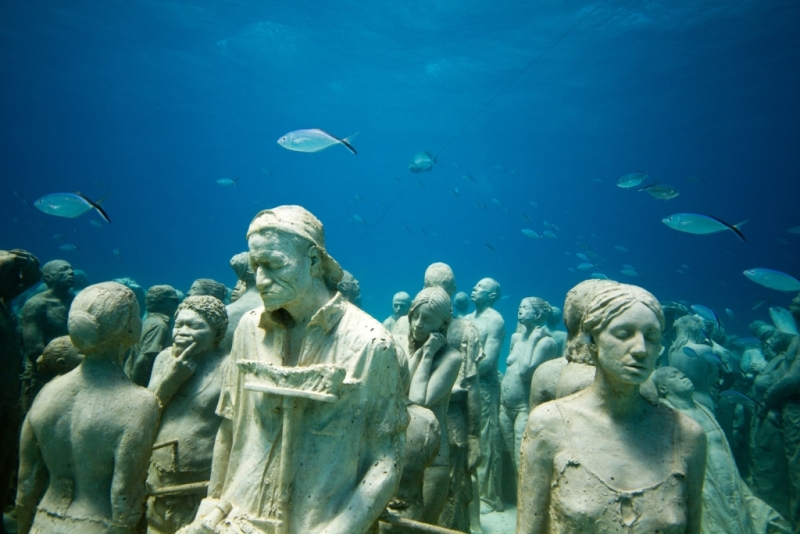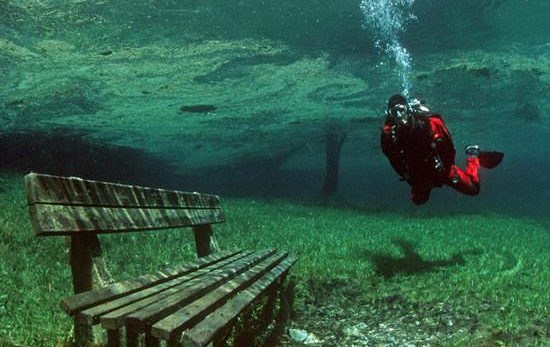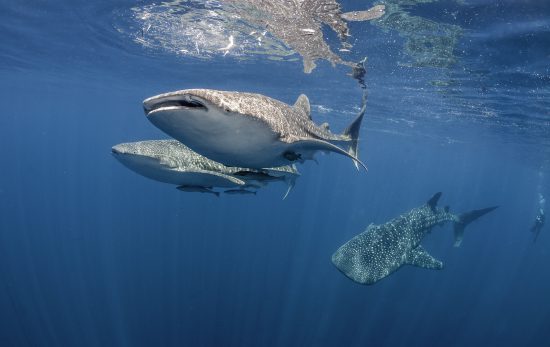While humanity’s effect on our ocean can be negative, it can also be beautiful. For example: the Underwater Sculpture Gardens in Grenada and Cancun, created by British sculptor Jason deCaires Taylor.
The Molinere Underwater Sculpture Park in Grenada is a collection of ecological underwater art pieces situated within a National Marine Park. Due to storm damage the park suffered in recent years, strategic placement of artificial structures provides a new place for marine life to thrive. In addition, the sculptures are a diversion, helping to protect other endangered coral reefs in the area.
Molinere, the world’s first un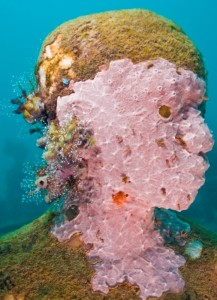 derwater sculpture park, opened to the public in May 2006. Visitors see a variety of cement figures representing the local community rising from the ocean floor. Featuring mostly human forms, the various collections are truly magnificent.
derwater sculpture park, opened to the public in May 2006. Visitors see a variety of cement figures representing the local community rising from the ocean floor. Featuring mostly human forms, the various collections are truly magnificent.
As sea life begins to grow on the surface of each piece, a variety of colors and patterns emerge, making a stunning visual. Because each piece changes over time along with the effects of the natural environment, it is considered to be “living art.”
In November 2010, a second underwater sculpture garden opened in Cancun, Mexico: MUSA El Museo subaquàtico de Arte. We interviewed the artist, Jason deCaires Taylor, about his background and inspiration for these projects.
“When I was younger I in lived in Malaysia, we often used to visit the islands on the east coast and take extended breaks to Thailand. I was very fortunate at a young age to snorkel some incredibly pristine reefs. This really fired my imagination and I knew that as soon as I had the opportunity to become I scuba diver I should take it.”
Next, we asked about the inspiration for his sculptures. Some of the sculptures such as The Bankers and Time Bomb have a clear message, and while the houses in the The Urban Reef series are definite statement, others such as Vicissitudes (pictured below) are less straightforward.
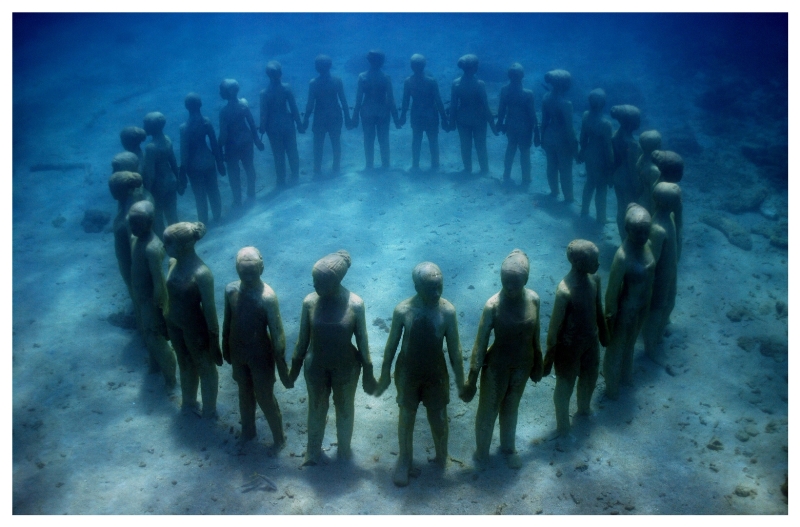
He said, “A lot of my work is about changing the context of things, I find we are able to gain a different view point on life as a whole when we move something out of its familiar environment, possibly enabling us to have more empathy towards others and step back and see the absurd ways we go about life.
“As the ring of children are transformed by their underwater habitat, they will be marked by the surrounding environment, echoing how we as children are affected and transformed by our surroundings. The sculptures will constitute and represent process, chance, and organic transformation.
The aim of this project is to portray how time, circumstance and surroundings are inscribed in the physical body. Using young children for the artwork is intended to highlight the capacity of humans to adapt to their environment but also to bring to attention the importance of attending to the future of that environment. Having globally lost around 40% of our coral reef systems already and scientists predicting their complete demise by the end of the century, the artwork will embody these issues”
When asked about plans for future sculpture gardens, Jason expressed an interest in trying different underwater environments: Asia perhaps, or the Mediterranean. “Also as my knowledge of materials and technology has changed I am looking forward to being slightly more ambitious with the scale and message of my works. With 140 million sq miles of water on the planet I donit think I am going to run out of canvas any time soon.”
If you haven’t yet seen images of the underwater sculpture gardens, take a moment to check out underwatersculpture.com. If you’re ready to add Grenada or Cancun to your scuba diving to do list, check out the Featured Destination profiles on scubaearth.com before you go. Each one includes travel tips, iconic dive sites and marine life you can expect to see. Here is a preview of what you can see at the Underwater Sculpture Gardens.
ScubaEarth Featured Destination Grenada
ScubaEarth Featured Destination Cancun

